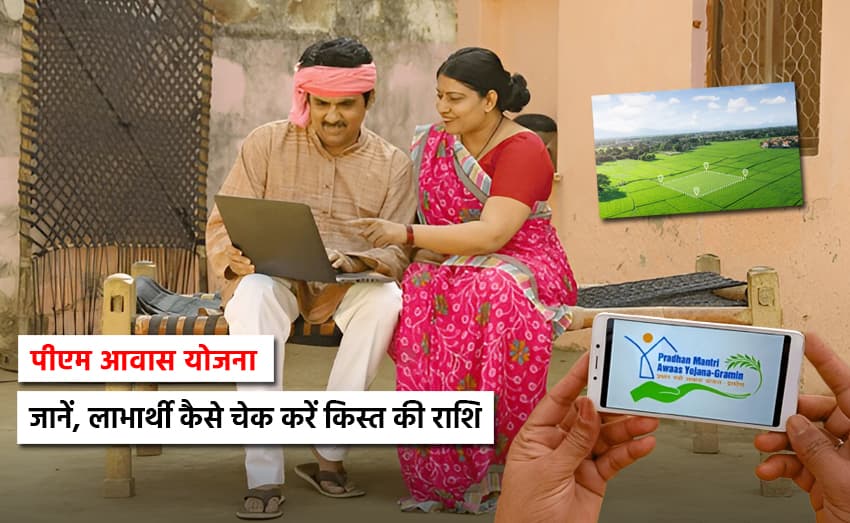Sundaram Verma, A Farmer, Grew Thousands Of Plants In One Litre Of Water
Sundaram Verma, a Padma Shri recipient, shares his success story.
Today, the country's groundwater level is steadily declining. Farmers are concerned about the inconsistency of rain from above. Crops are being damaged in some areas due to drought, and there is significant loss in others due to excessive rains or floods. Farmers' crops suffered significant losses this year due to the drought in Chhattisgarh. In such a situation, it is critical that we use water efficiently. The government is also emphasising the importance of farmers growing crops that require less water, and farmers are being encouraged to do so.
Growing thousands of plants in one liter of water, Sundaram Verma, a Rajasitan farmer, has made water conservation his focus. For his extraordinary achievements to agriculture, the Indian government bestowed upon him the Padma Shri Award. Today, TractorKharido will share the success story of Rajasthan farmer Sundaram Verma, who earned the award by growing thousands of plants in one litre of water.
What kind of technology did the farmer employ?
Farmers are increasing their income by utilising new agricultural techniques. Many of these farmers are also producing bumper crops as a result of the technology they developed. Sundaram Verma of Rajasthan is one of these farmers, and he has done an amazing job growing thousands of plants with one litre of water using his own technology. He invented a farming method that uses only one litre of water. He dubbed this method "dry farming." Dry farming is simply that. Sundaram Verma, a farmer in Rajasthan's semi-desert region, has planted thousands of saplings using this technique. This is known as "dry farming." Sundaram Verma's technique can help you save time, labour, money, and water.
What exactly is the Dryland Agroforestry Technique?
Rajasthan receives less rain on average. The groundwater level has dropped due to a lack of rain in this area. In such a case, Sundaram's technique could be extremely beneficial to farmers. Please inform me that the average rainfall in Rajasthan is approximately 50 cm. This rainwater is absorbed by the ground. There will be no need for additional irrigation water if this water is saved. With this in mind, farmer Sundaram Verma planted approximately 50,000 saplings, of which 80 percent are still alive.
Padma Shri Award for contributions to agriculture
Sundaram Verma, a farmer, has been recognised by the government for conserving water in agriculture. For his efforts, the Indian government awarded him the Padma Shri award. Apart from that, he has received numerous other honours. Sundaram Verma received the National Farmer Award in 1997, the International Crop Science Award in New Delhi, and numerous other international and national awards from the International Development Research Center of Canada. At the same time, he has been recognised with numerous state awards.
Where did the concept of dry farming originate?
Sundaram Verma is a resident of Danta village in Rajasthan's Sikar district. Sundaram Verma earned his bachelor's degree in 1972. Instead of working after that, he tried his hand at farming. Agricultural scientists used to meet him frequently in connection with agriculture. During this time, he would discuss farming problems with them and solicit solutions. While doing so, he began to make new efforts. In this episode, he used dry farming techniques to grow thousands of plants from a single litre of water. He is now known as a well-known farmer.
In this manner, dry farming techniques were used.
As I began to perform well in agriculture, I was chosen for a prestigious training programme in New Delhi. Sundaram Verma discovered dry farming for the first time here. He realised that collecting rainwater and using it for farming was the best solution, but in his native village in Rajasthan, the monsoon rains were insufficient to harvest that season's crops, so Sundaram Verma They tried the dry-land farming recipe on trees and were successful in their endeavour. In this way, this farmer established a distinct identity in the agricultural field and became a source of inspiration for other farmers. Today, not only the farmers of the region but people from far and wide come to learn the techniques of dry-land farming from him.
What is dry farming technique
Dryland farming, or rainfed farming, is farming in which farming is done without irrigation of the field. This technique is good for those areas where there is less rainfall and the land there is dry. For example, less rain is seen in both Rajasthan and Gujarat. In this type of farming, crops are grown without irrigation by accumulating the limited moisture available. Due to the lack of rainfall, continuous efforts are made to maintain and increase the soil moisture. For this, deep ploughing is done, and efforts are made to prevent evaporation. In this type of farming, crops grown in less moisture and in less time are grown.
TractorKharido always keeps you updated. For this, agriculture news is published about new models of tractors and their agricultural uses. We also publish monthly sales reports of major tractor companies, such as VST tractors, Escorts tractors, etc., in which detailed information about wholesale and retail sales of tractors is given. Contact us if you would like to receive a monthly subscription.
















